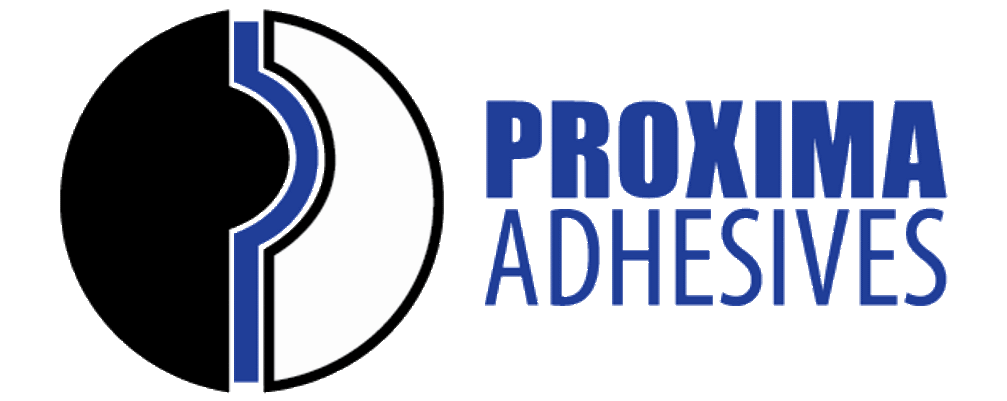Written by: Aleksandra Lewandowska, Sławomir Chorek
MONOLITH – Leader in Structural Adhesives
Structural Adhesives - Definitions
By definition, a structural adhesive is an adhesive that forms a stronger bond than the materials it is used to join. In practice, it is an adhesive that allows similar or dissimilar plastics to be bonded by participating in the final structural unit and its strength. Typically, the minimum bond strength expected is greater than 7 MPa.
MONOLITH structural adhesives are characterised by their high bond strength and hardness. They replace traditional material bonding or alternative other bonding methods. This group of adhesives includes epoxy, polyurethane and methacrylate based acrylics.
Structural Adhesives Division
This type of adhesive can be divided into two-component and one-component adhesives. A two-part adhesive contains two separate components in a non-reactive state. These must be thoroughly mixed in the correct proportions before use to achieve the desired properties of the cured adhesive. A one-component adhesive contains only one component that cures when exposed to certain environmental conditions or energy sources.
Comparison of structural adhesives and other material bonding methods
How do the properties of materials bonded with Monolith structural adhesives compare to other common bonding methods? The characteristics are shown in the tables below.
- Structural Bonding vs. Mechanical Bonding
| Mechanical Bondinge | Monolith Structural Adhesives |
| Structure | |
| – Unsightly appearance – Difficulty in joining thin materials | + Invisible on the surface + Easy bonding of thin, lightweight materials |
| The bonding process | |
| – Requires drilling of holes – Difficult to paint – Requires additional sealing + Good to look at | + Wipe the surface dry before bonding (acrylics) + Bond and seal in one go – Inspection usually results in material damage |
| Final performance | |
| – Stress sources – May leak – Joint may weaken over time – Galvanic corrosion + Can be replaced | + Even stress distribution + Excellent strength + Prevents corrosion – Difficult to replace/remove |
- Structural bonding vs. Welding
| Welding | Monolith Structural Adhesives |
| Structure | |
| – Causes surface imperfections – Difficult with thin materials – Unsuitable for joining dissimilar materials – Difficult with complex shapes | + Produces smooth surfaces + Can be used with thin, lightweight materials + Can be used to create complex shapes + Ideal for joining different materials |
| The bonding process | |
| – Causes surface distortion (welding heat) – May require additional sealing – Requires some skill to perform – Damages metal coatings – Usually requires finishing + Ready to use | + Will not warp + Bonding and sealing in one operation + No special skills required + Little or no post-treatment – Longer working time |
| Final performance | |
| – Sources of stress – Corrosion is present – Poor vibration characteristics + Good reception | + Even stress distribution + Excellent strength + Prevents corrosion + Reduces vibration + Bond strength can exceed weld strength |
- Structural Adhesives vs. Sealing Compounds
| Sealing Compounds | Monolith Structural Adhesives |
| Structure | |
| – Forces too small for construction – Does not contribute to the overall structure – Requires more reinforcement/stiffening + Lower cost/litre | + Contributes to the overall design + Requires limited bracing/reinforcement |
| The bonding process | |
| – Requires solvent cleaning – May require primer – Usually slow cure + Usually no mixing required | + Simply wipe the surface dry before gluing (acrylics) + Normally no primer required + Short bonding time – Requires mixing of ingredients |
| Final performance | |
| – Typical bond strength <5 MPa – Not resistant to torsion of the structure – Sensitive to ageing + Gives 100% or more elongation | + Bond strength >12MPa + Excellent strength |
- Structural adhesives vs. High performance adhesive tapes
| High performance adhesive tapes | Monolith Structural Adhesives |
| Structure | |
| – Do not contribute to the overall structure – Require more reinforcement/stiffening – Difficult to use for complex shapes – High cost per running metre | + Contributes to the overall design + Limited stiffening/reinforcement required + For use with complex shapes |
| The bonding process | |
| – Requires solvent cleaning of surface prior to bonding – Difficult to automate – Difficult to apply in corners – Tape cannot be repositioned after application – Requires high application pressure + Instant adhesion + Dry application | + Simple dry wiping of the surface before gluing (acrylics) + Manual or automatic application + Easy to use on corners + Easier to bond uneven surfaces than smooth surfaces – Longer bonding time |
| Final performance | |
| – Deformation sensitive – Bond strength <1MPa – Not resistant to torsion of structures – Very sensitive to temperature changes + Gives 100% or more elongation | + No deformation + Bond strength >12MPa + Contributes to surface integrity + Limited temperature sensitivity |
In summary, Monolith Structural Adhesive has a number of advantages that give it a significant advantage over other common bonding methods. A summary of the main advantages is given in the table below:
| Best structural design | |
| + Bonding of different materials + Bonding of thin materials + Aesthetic bonding line | + Contributes to the overall design + Limited stiffening/reinforcement required + For use with complex shapes |
| Best bonding method | |
| + Bonding and sealing in one operation + No special skills required + Gluing position can be changed + Adjustable bonding and working time + Powder coating possible | + Simple dry wiping of the surface before gluing (acrylics) + Automatic or manual application + Easy on corners + Can be used on surfaces and coatings |
| Best performance | |
| + High fatigue resistance + High ageing resistance + No corrosion + Limited temperature sensitivity | + No creep + Bond strength >12MPa + Contributes to the overall structure + Hardness |
Principles of working with structural adhesives
The first step in the bonding process is surface preparation. The amount of attention we pay to this activity will pay dividends in terms of the durability of the bond created. Depending on the adhesive we are using, there are specific rules to follow. Acrylic adhesives usually require minimal surface preparation. Dry wiping may be sufficient. Their use is environmentally friendly and user friendly. Epoxy and urethane adhesives require prior degreasing of the surface with isopropyl alcohol (IPA). Some materials also require abrading (sanding). Plastics with low surface energy may require corona or flame treatment. In addition, primers are sometimes used to improve adhesion on difficult to bond materials.
It is important to design the process well. A few design rules can help. Structural adhesives are designed for shear and compressive loads. Tear and peel loads should be avoided. The width of the adhesive should be at least 2 cm. It is a good idea to conceal protruding edges to minimise the risk of material peeling. The effect of thermal expansion should also be considered. It may be necessary to use welds or mechanical fasteners in strategic locations, particularly in areas where tearing and peeling are unavoidable. The figures below show some of the rules for joint design:
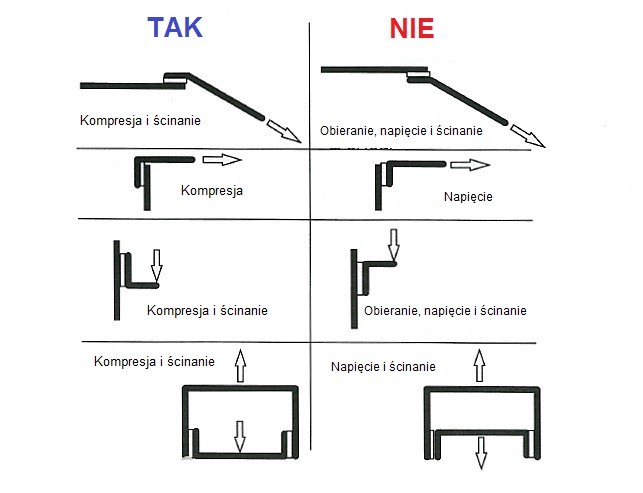
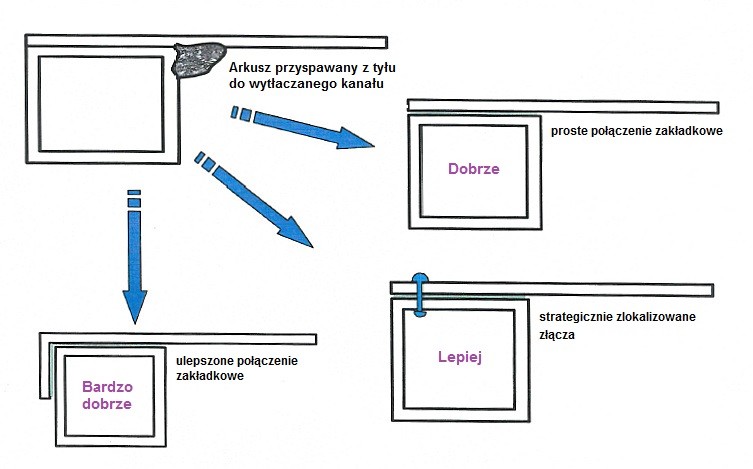
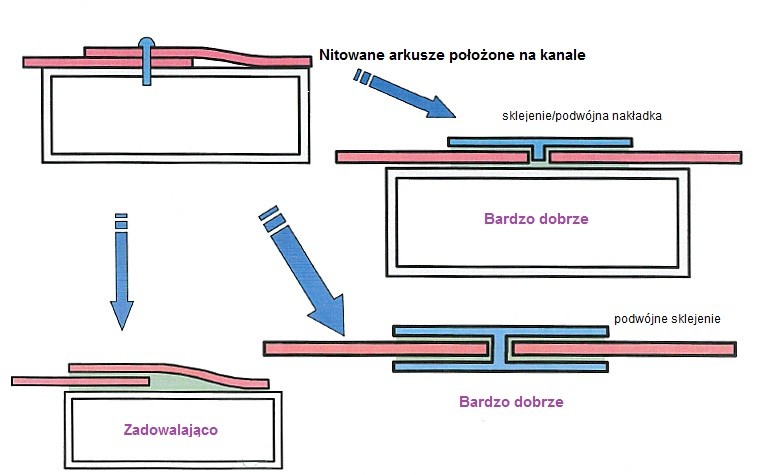
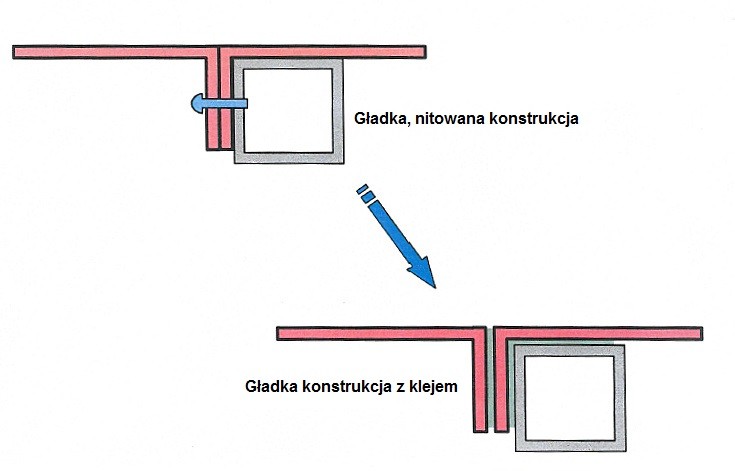
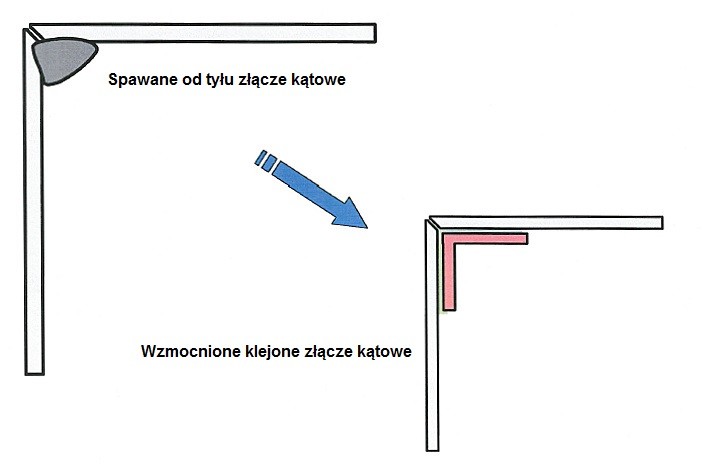
Structural adhesives is a growing industry due to increasing market demand. The use of bonding methods is becoming increasingly widespread in the construction industry. An example of this is the strengthening of existing joints by bonding various reinforcing elements. Structural adhesives are also used as stabilising elements, for example as chemical anchors. All in all, despite some limitations, adhesives are becoming a serious alternative to traditional methods of joining structures.
Contact Us
Please complete the form below and you will be contacted shortly.
For immediate technical assistance, please contact me on the following phone number:
601536440
